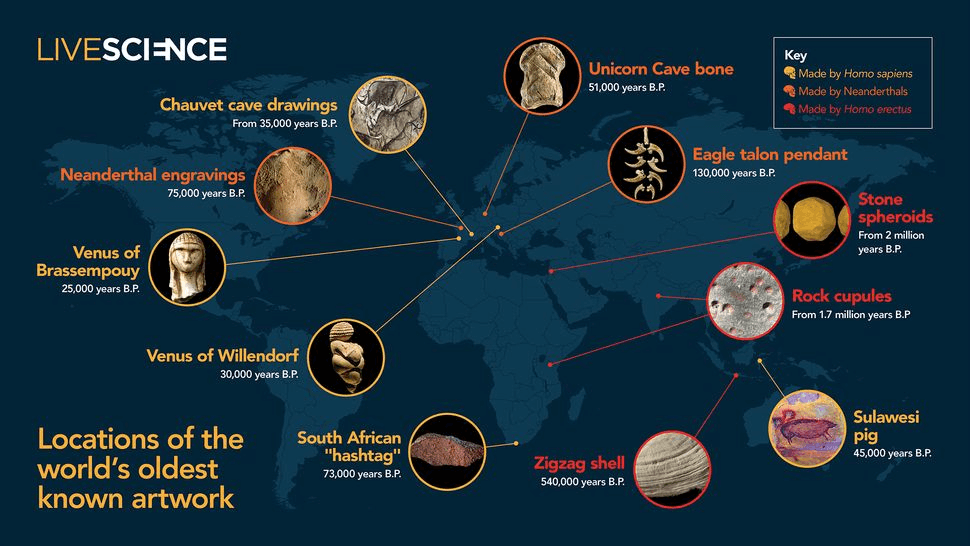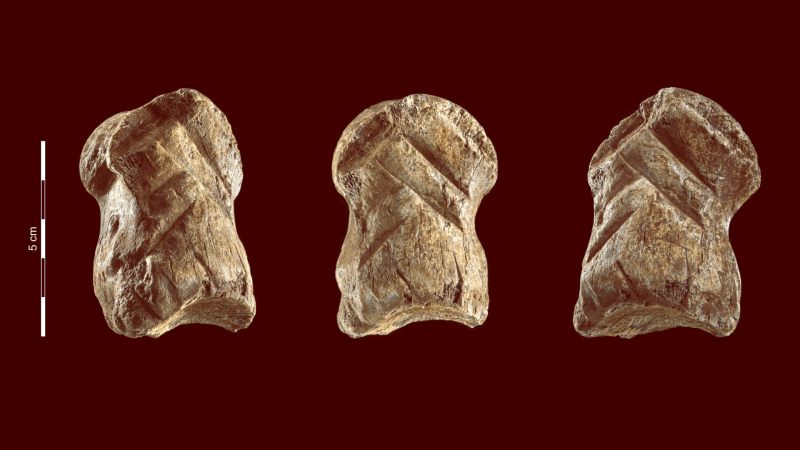For centuries, the “Unicorn Cave,” or “Einhornhöhle,” in central Germany has been famous for its many thousands of bones. In medieval times, people thought the bones came from unicorns.
But a few years ago, archaeologists excavating the cave unearthed an unusual object: a toe bone from a giant deer. The material itself was noteworthy: Although giant deer were once prey for Europe’s prehistoric hunters, the animals usually roamed much farther north, indicating this bone had been brought from afar.
And it was clearly different from others in the cave: Several large grooves had been carved at angles into the bone’s upper surface, creating a prominent chevron-like pattern.
Even more extraordinary was its age: Radiocarbon dating of the bone showed that the deer lived around 51,000 years ago, when the Unicorn Cave was occupied by Neanderthals, our extinct human relatives.
Over the past decade, increasing evidence suggests artistic expression emerged much earlier in human evolution than scientists once thought, and it’s reshaping our understanding of the cognitive abilities of archaic humans, such as Neanderthals and earlier hominins. For instance, there’s archaeological evidence that Neanderthals made abstract designs on cave walls long before Homo sapiens arrived in Europe and may have made pendants from eagle talons up to 130,000 years ago.
“Cognitively, Neanderthals seem to have been just as capable at becoming artists as our own species, Homo sapiens,” [Dirk Leder, an archaeologist with the Lower Saxony state government who has published research on the object] said.
































